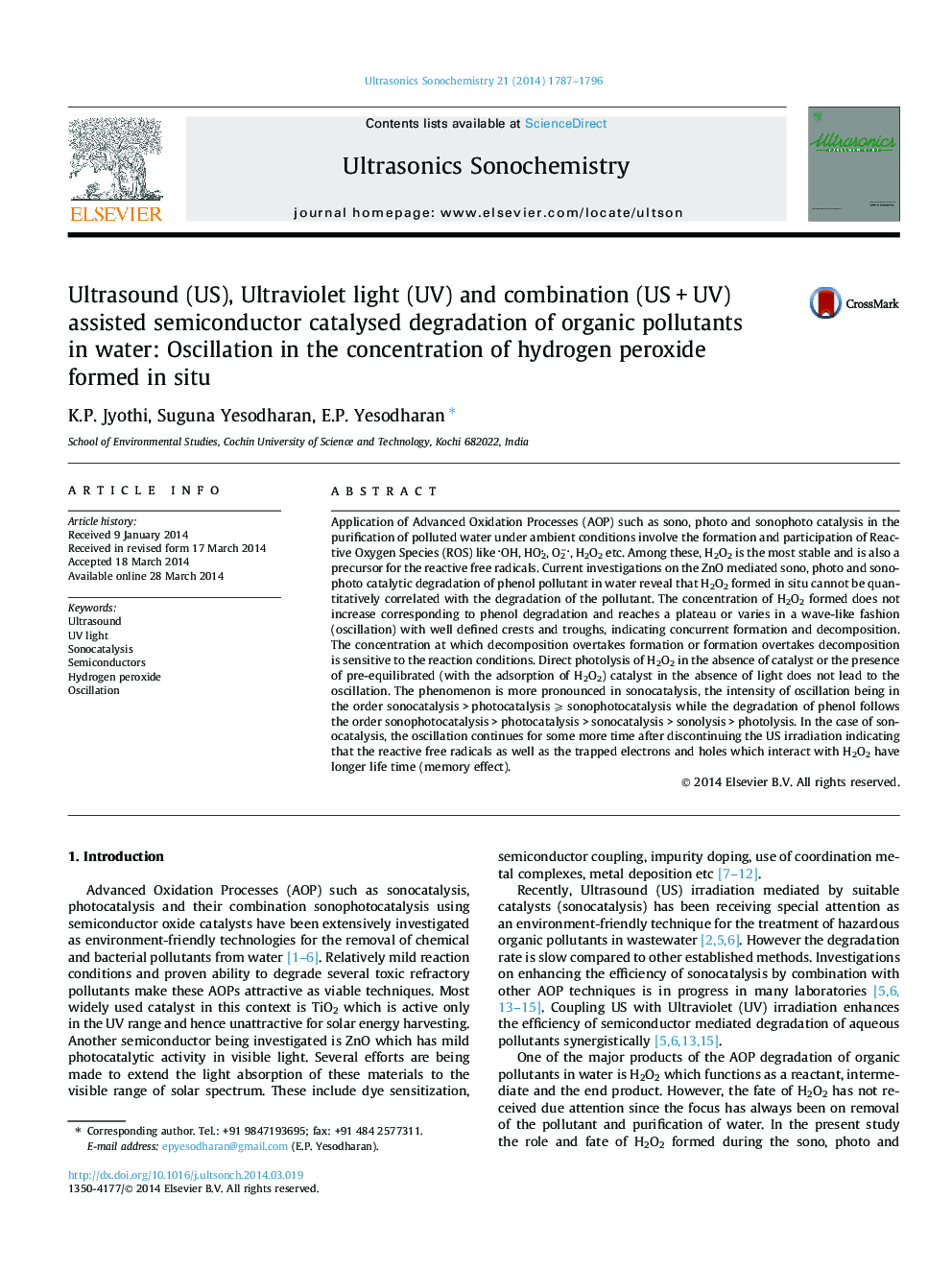| کد مقاله | کد نشریه | سال انتشار | مقاله انگلیسی | نسخه تمام متن |
|---|---|---|---|---|
| 1266105 | 972261 | 2014 | 10 صفحه PDF | دانلود رایگان |

• Zinc oxide as a sono, photo and sonophotocatalyst for the removal of phenol pollutant from water.
• No correlation between the phenol degradation and concurrently formed H2O2.
• H2O2 undergoes simultaneous formation and decomposition resulting in oscillation in concentration.
• ZnO dosage, substrate concentration, H2O2 concentration, O2 and pH influence oscillation.
• Oscillation in the concentration of H2O2 continues even after the irradiation is discontinued indicating memory effect.
Application of Advanced Oxidation Processes (AOP) such as sono, photo and sonophoto catalysis in the purification of polluted water under ambient conditions involve the formation and participation of Reactive Oxygen Species (ROS) like OH, HO2, O2−, H2O2 etc. Among these, H2O2 is the most stable and is also a precursor for the reactive free radicals. Current investigations on the ZnO mediated sono, photo and sonophoto catalytic degradation of phenol pollutant in water reveal that H2O2 formed in situ cannot be quantitatively correlated with the degradation of the pollutant. The concentration of H2O2 formed does not increase corresponding to phenol degradation and reaches a plateau or varies in a wave-like fashion (oscillation) with well defined crests and troughs, indicating concurrent formation and decomposition. The concentration at which decomposition overtakes formation or formation overtakes decomposition is sensitive to the reaction conditions. Direct photolysis of H2O2 in the absence of catalyst or the presence of pre-equilibrated (with the adsorption of H2O2) catalyst in the absence of light does not lead to the oscillation. The phenomenon is more pronounced in sonocatalysis, the intensity of oscillation being in the order sonocatalysis > photocatalysis ⩾ sonophotocatalysis while the degradation of phenol follows the order sonophotocatalysis > photocatalysis > sonocatalysis > sonolysis > photolysis. In the case of sonocatalysis, the oscillation continues for some more time after discontinuing the US irradiation indicating that the reactive free radicals as well as the trapped electrons and holes which interact with H2O2 have longer life time (memory effect).
Journal: Ultrasonics Sonochemistry - Volume 21, Issue 5, September 2014, Pages 1787–1796